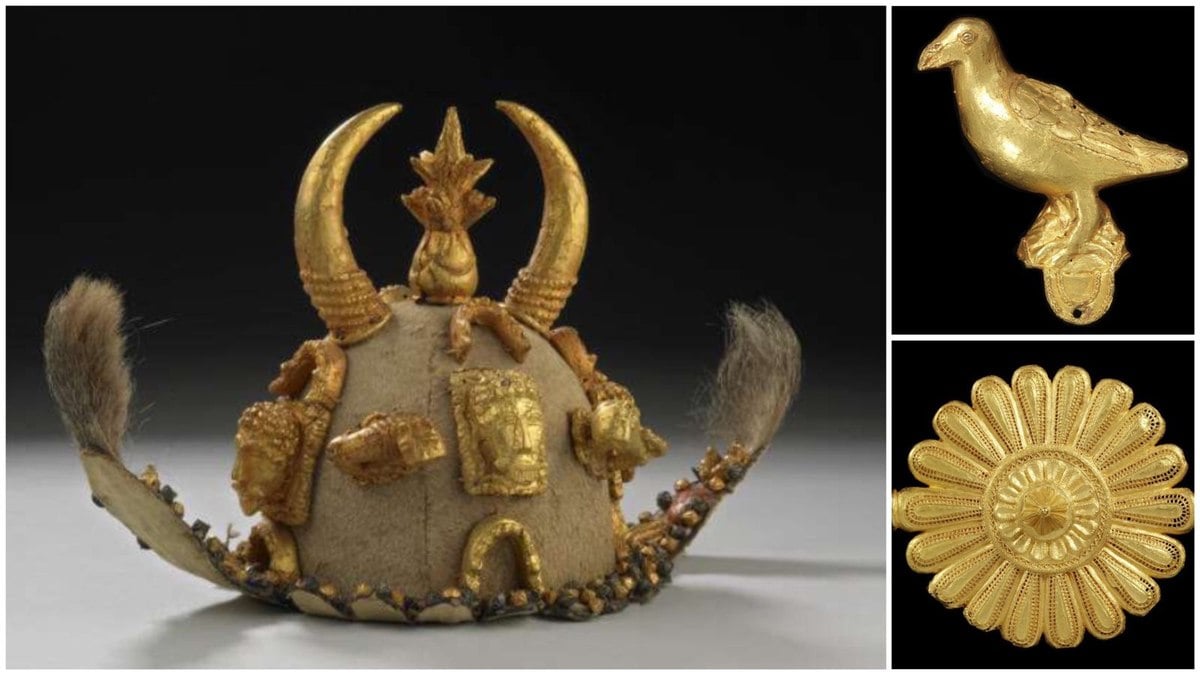
The 'crown jewels' looted by the British from Africa are now being returned on credit
Will you, on loan, get yours back before? This is what will happen to Ghana in the coming months: 150 years later, the United Kingdom will send some 32 artifacts to the Manhia Palace Museum (a historical museum located in Kumasi, Ghana).
Artifacts on loan include cast gold symbols used by officials to purify the soul of King Asante. There are also a gold ring, a state sword, a ceremonial cap with gold artifacts, and a cast gold lute model (shangguo).
The announcement of this “cultural partnership” was made on Thursday (25). London's Victoria and Albert Museum (V&A) and the British Museum will be the consignors this time, under a three-year loan agreement with the option to renew for a further three years.
The V&A's Instagram page made a post showing some of the artefacts being sent to Ghana.
“In conjunction with the Manhia Palace complex, they will be on display in April this year to celebrate the silver jubilee of His Royal Highness, the Asantehene, Osi Tutu II. The objects will be exhibited for the first time in Kumasi, Ghana. 150 years, on long-term loan from the British Museum and the V&A”, The release says.
But why long-term debt, and not real income? The answer lies in the law: national museums in the United Kingdom cannot categorically return controversial artefacts. Therefore, such credit agreements are considered as a viable way to repatriate goods to their home countries.
Plundered countries, on the other hand, feared that long-term loans were a way for the United Kingdom to recognize ownership and, subsequently, assume full control over the artefacts.
In an interview with the BBC, the director of the V&A, Tristram Hunt, said the gold items in the court jewels were equivalent to the British “crown jewels”. He added that he thinks partnerships between museums and countries of origin are important. “I don't think all of our museums will fall apart if we create this kind of partnership and exchange.”
However, the V&A director emphasized that the partnership is “not a back door withdrawal”, meaning it cannot be considered a permanent return to Ghana.
The loan agreements were not signed with the Government of Ghana, but with the current Asante King, Otumfo Osei Tutu II, also known as Asantehene. Artifacts will be on display at the Manhia Palace Museum in Kumasi to celebrate Asantehene's silver jubilee.
History
Much of the material was looted during the Anglo-Azante Wars of the 19th century (1874). During that time, the Asante built one of the largest empires in West Africa, notable for its wealth and military activity. After the European invasions, they became victims of many robberies and lost countless goods.
The artefacts go beyond the historical aspect: they represent fine examples of Asante goldsmithing (the art of working with precious metals) and have deep cultural, historical and spiritual significance for the Asante people.
In this way, their departure from their people is not only a search for wealth, but also a way to remove symbols of power, Angus Patterson, senior curator at the V&A, explained to the BBC: “It's a very political act.”

“Internet evangelist. Writer. Hardcore alcoholaholic. Tv lover. Extreme reader. Coffee junkie. Falls down a lot.”





More Stories
Kamala has warned that democracy in America will be in danger if Trump wins
The world’s rarest donkey has been born at a zoo in the United Kingdom; Watch the video
Senators travel to America in search of best practices…